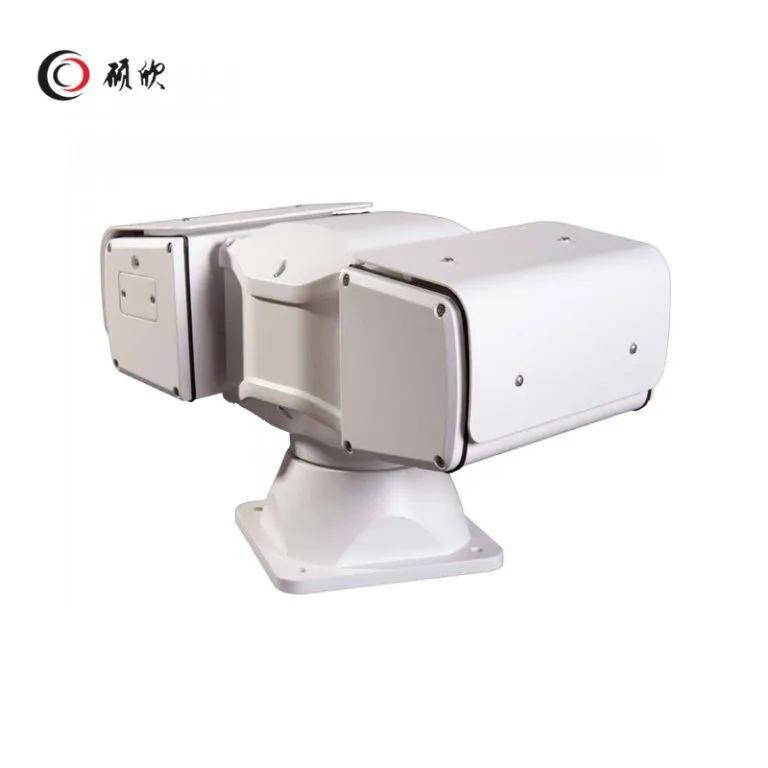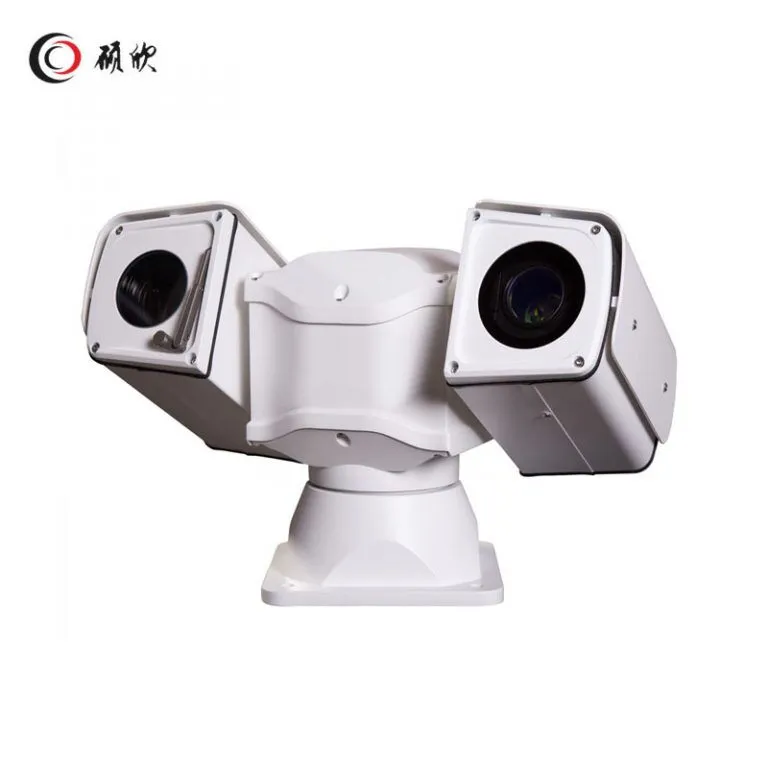لقد غيرت تكنولوجيا الرؤية الليلية بشكل جوهري القدرات التشغيلية في البيئات المحرومة من الضوء ، مما أتاح التصوير الواضح حيث تفشل الرؤية التقليدية. من خلال الاستفادة من الإضاءة تحت الحمراء المتقدمة والكشف الحراري ومجموعات أجهزة الاستشعار الدقيقة، تتغلب الأنظمة الحديثة على الظلام الكامل لتقديم الذكاء البصري الحرج. أصبحت هذه التكنولوجيا لا غنى عنها للعمليات التكتيكية وأمن المحيط وبعثات المراقبة الليلية حيث سيخلق الظلام المطلق نقاط ضعف تشغيلية. يدرس تحليلنا التقنيات الأساسية التي تدعم هذه الأنظمة وخصائص أدائها ومعايير الاختيار للتطبيقات المحددة للبعثة.
img. How Night Vision Technology Enables Imaging in Complete Darkness.webp
دور التصوير بالأشعة تحت الحمراء والحرارية في إعدادات الضوء المنخفض
كاميرات الرؤية الليلية هي أدوات للأمن في الأماكن الغامضة أو المظلمة. إنها مهمة للغاية لمراقبة الأشياء في الليل. تستخدم هذه الأجهزة الأشعة تحت الحمراء (IR) والتصوير الحراري للعمل بشكل جيد حتى عندما لا يكون هناك ضوء على الإطلاق.
تساعد الإضاءة بالأشعة تحت الحمراء الكاميرات على رؤية الأشياء التي تفوتها العيون البشرية. تعطي مصابيح LED بالأشعة تحت الحمراء ضوء لا يمكن للناس رؤيته ولكن يمكن لأجهزة استشعار الكاميرا التقاطه. وهذا يسمح لكاميرات الرؤية الليلية بإضاءة وجهة نظرها بالضوء الغير مرئي، مما يجعل الصور واضحة في الظلام الكامل.
التصوير الحراري يساعد على اكتشاف الحرارة. يلتقط الدفء من الأشياء أو الناس. هذا يعمل حتى في البقع المظلمة الفائقة حيث لا يمكن للضوء العادي المساعدة. معًا ، تتأكد هذه الحيل من أن الصور تبقى حادة بغض النظر عن مدى الظلام.
كيف يحول تكثيف الصورة الظلام إلى مناظر واضحة
تكثيف الصورة هو طريقة كبيرة أخرى للحصول على الرؤية الليلية. إنه يعزز أجزاء صغيرة من الضوء الطبيعي، مثل النجوم أو القمر، باستخدام أنبوب خاص. هذا يغير قطع الضوء إلى إلكترونات، يضاعفها بلوحة صغيرة، ويحولها مرة أخرى إلى ضوء مرئي على شاشة متوهجة.
تقنية ستارلايت تصنع صورا ملونة حتى في ضوء غامض حقا. لا يعمل في الظلام الكامل بدون مساعدة الأشعة تحت الحمراء. ولكن في ضوء منخفض جدا ، فهو رائع ، مما يعطي صور واضحة باللون الأسود والأبيض أو الملون اعتمادًا على الإعداد.
لماذا حساسية المستشعر هي مفتاح نجاح الرؤية الليلية
يعتمد مدى عمل كاميرات الرؤية الليلية بشكل جيد إلى حد كبير على أجهزة استشعارها. أجهزة الاستشعار الخاصة، وغالبا ما تكون CMOS أو CCD، تلتقط ضوء الأشعة تحت الحمراء من الأشياء والأشخاص. يحولون هذا الضوء إلى فيديو أبيض وأسود مفصل. الاستشعارات الحساسة للغاية تلتقط حتى أصغر قطع الضوء وتجعلها إلى فيديو مفيد.
أفضل الكاميرات تخلط الإضاءة بالأشعة تحت الحمراء مع هذه أجهزة الاستشعار الحساسة. هذا يجعلها تعمل بشكل جيد في جميع أنواع الضوء. بعض النماذج الراقية مزج الأشعة تحت الحمراء مع أجهزة استشعار الضوء المنخفض أو الضوء الأبيض الناعم لعرض الصور الملونة.
كيف تختار الكاميرا المناسبة للرؤية الليلية؟
العوامل التي تشكل خيارات الكاميرا: النطاق والوضوح والتحكم
اختيار أفضل كاميرا للرؤية الليلية يعني التحقق من بعض الأشياء. وتشمل هذه نطاق الأشعة تحت الحمراء ووضوح الصورة وخيارات التحكم. مسافة الرؤية الليلية من 120 ~ 150 متر هو نموذجي. نطاق الأشعة تحت الحمراء أطول يغطي المزيد من الأرض للمشاهدة.
تؤثر وضوح الصورة على مدى قدرتك على تحديد التفاصيل. الصور عالية الوضوح تبقي أشياء مثل الوجوه أو لوحات الترخيص واضحة في ضوء منخفض. بالإضافة إلى ذلك ، تسمح أجهزة التحكم عن بعد مثل PTZ (Pan-Tilt-Zoom) للمستخدمين بتغيير منظر الكاميرا بسهولة ، مما يزيد من الوعي.
لماذا يساعد التكبير البصري على تحديد الأهداف البعيدة
التكبير البصري رائع لمشاهدة مناطق كبيرة أو رؤية أشياء بعيدة. على عكس التكبير الرقمي ، الذي ينفجر بكسلات فقط ، يبقي التكبير البصري الصور حادة عن طريق تحريك العدسة. هذا مفيد بشكل إضافي مع الأشعة تحت الحمراء طويلة المدى ، مثل عدسة المجموعات 2 المسافة تحت الحمراء ، الرؤية الليلية 150 متر. يساعد التكبير بوضوح على 150 متر على تتبع الأهداف دون فقدان التفاصيل.
لماذا التكيف مع مسائل الطقس للمشاهدة في الهواء الطلق
يمكن أن تكون الأماكن في الهواء الطلق صعبة ، مع الضباب أو المطر أو مشاكل أخرى. شو شين’ كاميرات الرؤية الليلية يجب التعامل مع هذه التحديات. تلك ذات الحالات المقاومة للماء وتعديلات الضوء الذكية تعمل بشكل جيد في ظروف قاسية.
هذه الكاميرات تبقي مراقبة على الطرق المظلمة، مواقف سيارات غامضة، إلخ.

هل يمكن للأنظمة المثبتة على المركبات أن تعطي رؤية ليلية ثابتة؟
كيف يحافظ امتصاص الصدمات و PTZ على استقرار الصور أثناء التنقل
كاميرات الرؤية الليلية على السيارات تتعامل مع الاهتزاز والحركة. تستخدم الأنظمة العليا تركيبات امتصاص الصدمات وميكانيكا PTZ الدقيقة للبقاء مستقرة. هذه الإعدادات تبقي الكاميرا ثابتة أثناء التحرك. كما أنها تسمح بدورات كاملة 360 درجة وميلات صعودا إلى أسفل. وهذا يعني تعقب سلس دون صور غامضة أو خارج الهدف، وهو أمر حيوي لدوريات الشرطة أو المهام العسكرية.
لماذا التحكم في الوقت الحقيقي مهم للاستخدام المحمول
التحكم في الوقت الحقيقي ضروري لمراقبة الهاتف المحمول. يحتاج المشغلون إلى تعديل التركيز والزوايا والتكبير بسرعة مع تغير الأمور. إقران الكاميرات مع خرائط GPS يجعل الأمور أفضل. يمكن لمشاهد الكاميرا أن تتداخل على الخرائط ، مما يساعد في الاستجابات السريعة أثناء الأحداث الحية أو فحص المسار.
لماذا الإضاءة الليزرية رائعة لمراقبة المركبات
الإضاءة القائمة على الليزر تفوق أضواء LED العادية لأنظمة السيارات. يعطي مناظر طويلة المدى مع شعاع أكثر ضيقة ، مثالية للتركيز على بقع محددة دون إضاءة كل شيء. أيضًا ، يقطع الليزر الأشعة تحت الحمراء من خلال الضباب بشكل أفضل من مصابيح LED العادية. هذا يجعلهم رائعين للرؤية الليلية القوية في المهام الصعبة.
كيف يساعدك Shuoxin على الحصول على رؤية ليلية رائعة؟
من هو Shuoxin ولماذا تثق بمعرفتهم؟
Shuoxin هو اللاعب الرائد في تكنولوجيا الرؤية الليلية عالية الجودة. انهم يركزون على الحلول لاحتياجات المراقبة الصعبة. وتشمل معداتهم كاميرات مرئية مع أنظمة الأشعة تحت الحمراء تصل إلى 150 مترًا - عدسة المجموعات 2 المسافة تحت الحمراء ، والرؤية الليلية 150 مترًا. منتجات Shuoxin خلط الأجهزة القوية مع البرمجيات الذكية، مثل الكشف عن الحركة والتحكم في الوقت الحقيقي. هذا يضمن أعلى أداء في أي إعداد، من البقع الثابتة إلى المركبات المتحركة. مع سنوات من البحث واختبارات الجودة الصارمة، Shuoxin هو اختيار قوي للمحترفين الذين يحتاجون إلى أدوات الرؤية الليلية الموثوقة.
الأسئلة الشائعة
Q1: هل يمكن أن تعمل كاميرات الرؤية الليلية بدون ضوء طبيعي؟
ج: نعم ، إنهم يستخدمون ضوء الأشعة تحت الحمراء. كل شيء حي ينبعث طاقة الأشعة تحت الحمراء ، والتي تسمى أيضًا الحرارة. حتى في الظلام الكامل ، تضيء مصابيح LED الأشعة تحت الحمراء المشاهد بشكل غير مرئي ، وبقع التصوير الحراري الحرارة من الأشياء أو الناس.
Q2: ما هو الفرق حول الرؤية الليلية تحت الحمراء والتصوير الحراري؟
ج: الرؤية الليلية تحت الحمراء تستخدم مصابيح LED الأشعة تحت الحمراء لإضاءة منظر الكاميرا بالضوء الغير مرئي. التصوير الحراري يلتقط أنماط الحرارة من الأشياء أو الناس. كل واحد له نقاط قوته الخاصة لمهام مختلفة.
Q3: هل تظهر كاميرات الرؤية الليلية كل اللون؟
ج: بعض الكاميرات الراقية تخلط الأشعة تحت الحمراء مع أجهزة استشعار الضوء المنخفض أو الضوء الأبيض الناعم للصور الملونة. قد تعطي الأسود والأبيض فقط تحت ضوء الأشعة تحت الحمراء. تستخدم الأنظمة الرائعة تقنية ضوء النجوم لللون في ضوء فائق الضوء.


